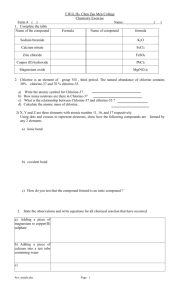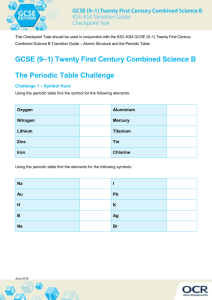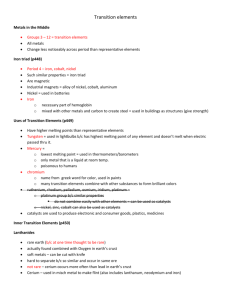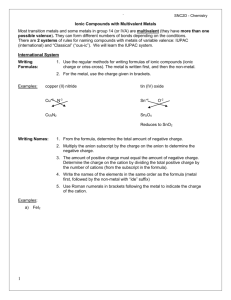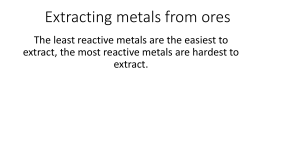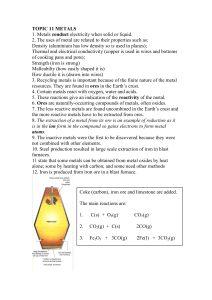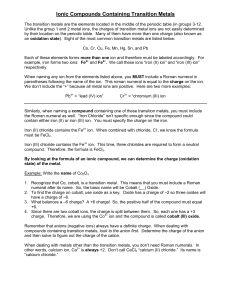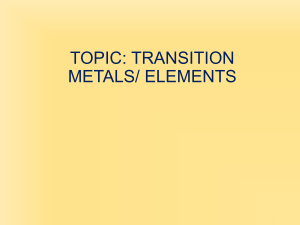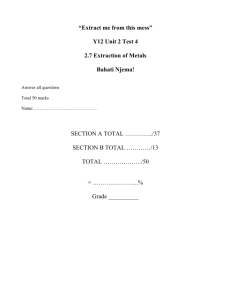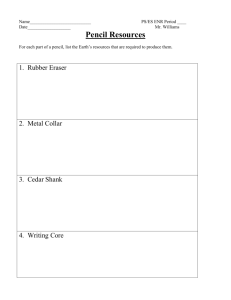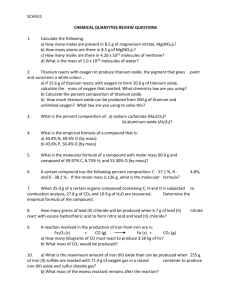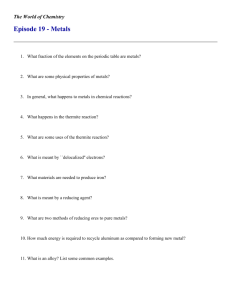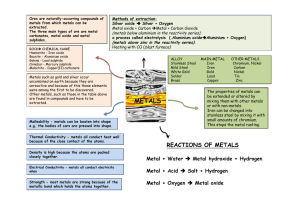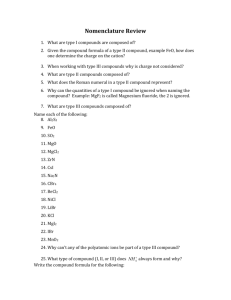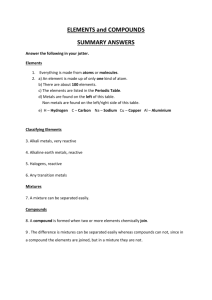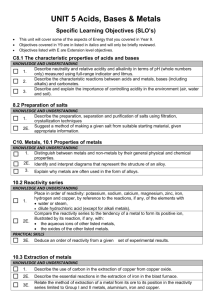Naming Ionic Compounds with Transition Metals
advertisement
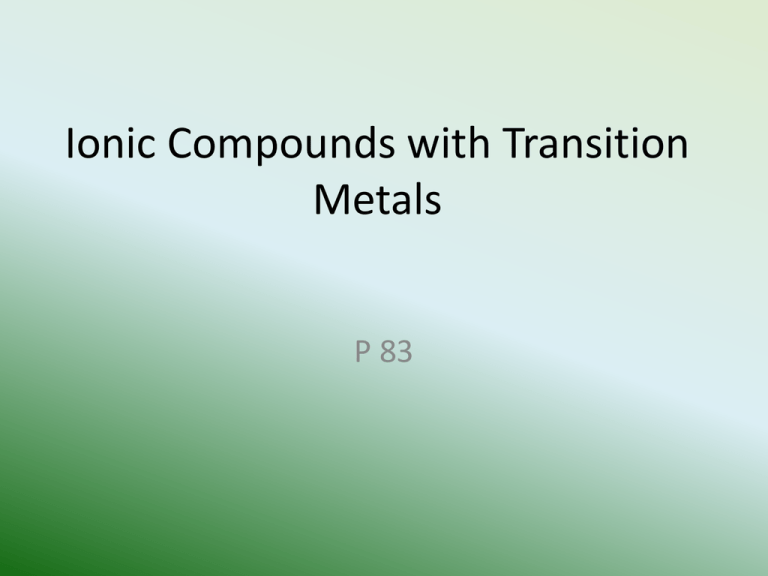
Ionic Compounds with Transition Metals P 83 What is different about transition metals? • Transition metals are located in the “d” block on the periodic table. Since they are filling the energy level that is NOT valence, there is some instability in the electrons… they sometimes will move into the valance rather than the “d” sublevel. • Due to this, transition metals will often have more than one charge. For example, Iron can have either a +2 or +3 charge. • Therefore, the rules for naming transition metals must consider the charge of the transition metal as part of the name Elements in Groups 3-12 • Write the name of the first element in the compound • Determine the charge through “reverse crossing out” • Use a Roman numeral in parentheses after the first name of the compound to represent the charge of the positive element Elements in Groups 3-12 (cont) • Write the root of the 2nd element in the compound • Add the ending –ide to the root of the name of the 2nd element Examples • NiO = nickel (II) oxide • Ni2O3= nickel (III) oxide • FeO = iron (II) oxide • Fe2O3 = iron (III) oxide How do you know the charge to write a formula? • Look at the Roman numeral in the name. That is the charge of the metal. • Silver and Zinc both have “fixed” charges – that is, they don’t have more than one charge. Their charge is always +1.

